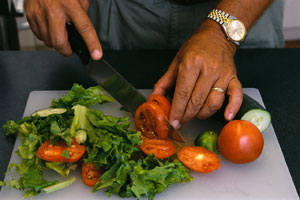Nutrition Unit Plan
for Sixth Graders


|
|
|
| Introduction | Lesson 1 | Lesson 2 | Lesson 3 | Lesson 4 |
|
Introduction ·
1 in 5 children in the · One extra soft drink a day gives a child a 60% greater chance of becoming obese. · Childhood obesity has increased since the 1960's by 54% among children ages 6 to 11 and 39% among children 12 to 17 years of age. · Excess weight in childhood and adolescence has been found to predict overweight for adults. Children with obesity, age 10 to 13, are reported to have a 70% likelihood of obesity persisting into adult years Between 5-25 percent of children and teenagers in the Description: Young people are bombarded by food issues–what to eat, where to eat, and how to eat. This unit will enable 6th graders to make better food choices on a daily basis. The purpose of the lessons is for students to gain knowledge about nutrition, their bodies and how to maintain a healthy lifestyle. Additionally, students will use technology to design educational materials including a PowerPoint presentation and a printed brochure. Prior knowledge:
Conducting Online Research Follow Up:
Identifying physical activities that contribute to maintaining
or improving the components of health related fitness (strength,
endurance, flexibility). Unit Goal: Students will demonstrate the ability to apply knowledge to areas of nutrition for healthy growth, development, and maintenance. • Students will demonstrate the ability to develop and implement goals for healthful eating habits. • Students will define common terms on food labels to be able to determine whether the food has a little or a lot of certain nutrients. • Students will demonstrate the ability to make healthy food choices in accordance with the USDA guidelines as presented in the Food Guide Pyramid. • Students will differentiate between nutritious and non-nutritious fast food choices.
|
||||
|
The views and opinions
expressed in this page are strictly those of the page author. |
||||